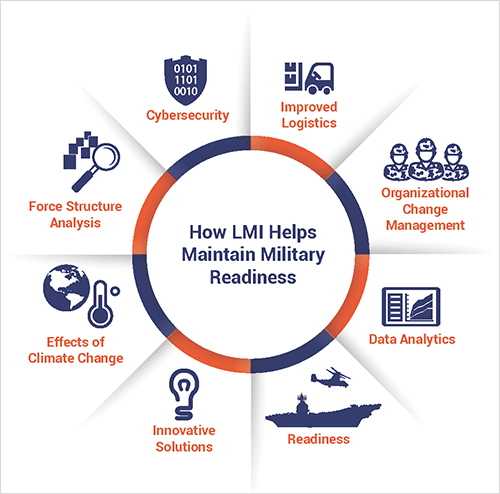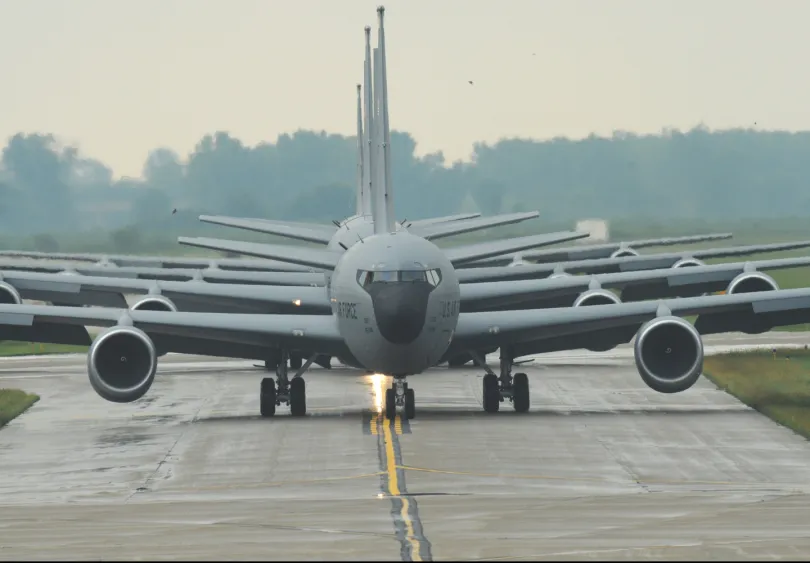
Creating a More Robust Military Readiness
Predictive Analytics, Military Readiness, Intelligent Readiness & Modernization, Predictive Analytics, Predictive Maintenance“The common theme across the services and the United States’ nuclear enterprise is one of force degradation resulting from many years of underinvestment, poor execution of modernization programs, and the negative effects of budget sequestration (cuts in funding) on readiness and capacity.”
– Heritage 2016 Index of US Military Strength
Of the many daunting and persistent challenges to our nation’s military, few are more complex or important than maintaining readiness of our forces.
I spent six tours in Washington, DC and five in the Pentagon. I witnessed the unending struggle to balance current and future readiness. I saw symptoms of the poor health of our military forces such as:
- Extended deployments over the past 14 years of war and multiple deployments of our troops
- Insufficient force structure to support multiple regions of the world simultaneously with the right platforms
- Too few aircraft carriers, ballistic missile defense systems, and other specialized systems needed to support overseas demands by our combatant commanders (COCOMs).
Recently, Secretary of Defense Ashton Carter stated, “Budgets often require trade-offs...Where trade-offs among force structure, modernization, and readiness posture needed to be made, we generally pushed to favor the latter two. This is important, because our military has to have the agility and ability to win not only the wars that could happen today, but also the wars that could happen in the future.”1
The problem is we are not good at predicting when we have to be prepared for what type of fight.
What Type of Fighting, and When?
There are many facets to consider, but let’s focus on two fundamental questions that each stakeholder has to sort out:
- Are we ready for high-end warfighting or low-end warfighting?
- Are we focused on current readiness or future readiness?
High-end warfighting means preparing for a capable adversary who has state-of-the-art equipment and the skill to use it. Think of the Defense Department’s focus on the “Third Offset.”
Low-end warfighting speaks to here-and-now daily threats from enemies such as ISIS or Al Qaeda. It’s about sending people as fast as we can. Low-end also includes humanitarian operations. Think of how many times the military performed rescue missions after natural disasters or set up military hospitals to help arrest an epidemic.
The other factor in military readiness is time to deployment. What deploys now, and what do we hold back so resources can recover or improve? There will always be pressure to deploy everything we have—for decisive wins and fast relief.
Let me illustrate this with a simple example. Let’s say your house is on fire. Unfortunately, the city could not afford having on-call firefighters or equipment. The day you call 911, they start building the fire truck and training the firemen. This answer is totally unacceptable, right? You want the truck rolling down the road with a fully trained, totally equipped and rested crew.
Who Are the Stakeholders in Military Readiness?
All have the same overall goal–to defend our land and interests. However, everyone has a different view on the best way to get there.
- The administration must deal with the crisis of the moment. The president wants to decisively address each crisis, whether that’s building a military hospital to stop the spread of Ebola or addressing terrorists attacking citizens.
- Our legislature also wants to address the crisis of the moment. However, many have interests in maintaining the nation’s industrial base and have a longer view of the readiness problem set.
- COCOMs have global responsibilities that differ from one region to the next. CENTCOM and AFRICOM have ongoing crises and must be ready to battle ISIS and Al Qaeda. On the other hand, PACOM has all of Asia to consider and needs more higher-end warfighting capability.
- Service chiefs focus primarily on the future—to ensure our military has the capacity and technology to deploy against higher end threats.
- The Secretary of Defense and Joint Chiefs have to balance these competing views. For certain, they will make no one completely satisfied with their decision.
Supporting Military Readiness
Strategic thinking and solid analysis is critical to developing a more ready force in a sustainable fashion. LMI helps build and enhance the readiness of the Joint Force in many areas:
- Materiel Maintenance—Everything corrodes and costs money to replace. If you don’t fix it this year, it gets worse next year.
- Healthcare Analysis—Health care is a huge bill for the military. How can we optimize the offerings to save funds and still provide top-quality care?
- Modernizing Sea Lift—Sea lift is how we move heavy items into deployments, like trucks and tanks. Much of our sea lift expires in a decade. It’s a huge expense to be evaluated. As we deploy in areas without large ports, how do we change our investments?
- Cybersecurity—The battle is increasingly virtual. LMI works with our military in the information technology policy realm to figure out what we need to be ready for, no matter what system we’re using.
- Innovation (e.g., Additive Manufacturing)—This includes technologies that build 3-D objects by adding layer-upon-layer of material. There is potential for military needs, but there are quality assurance concerns. If I say I’m going to build you a new mouse using additive manufacturing, that’s fine. But what if you are a pilot? How can you be sure this part is not going to break down when you are doing an 8-G turn?

Thoughts on Creating More Robust Military Readiness
The bottom line is to find common agendas amongst these protagonists. It’s about building greater trust and a shared culture. It means developing a shared view of the risk versus benefit (reward) from taking each course of action.


RADM Sinclair Harris (USN, Ret.)
Vice President, Client RelationsRADM Sinclair Harris (USN, Ret.)
Vice President, Client RelationsRetired Navy Rear Admiral Sinclair Harris is LMI’s senior client relations executive for the defense sector. His Navy service culminated as the vice director for operations to chair of the Joint Chiefs of Staff. He also commanded the U.S. Fourth Fleet, leading U.S. naval forces assigned to the U.S. Southern Command.


